There are many reasons why one should learn martial arts, with self-defense ranking pretty high up on the list.
But like everything else, not all martial arts disciplines are equal when it comes to fending off harm and protecting loved ones.
Yes, it’s often true that many of them share a common form of self-defense technique or weapons training, but it would be a mistake to assume that martial arts and self-defense are the same.
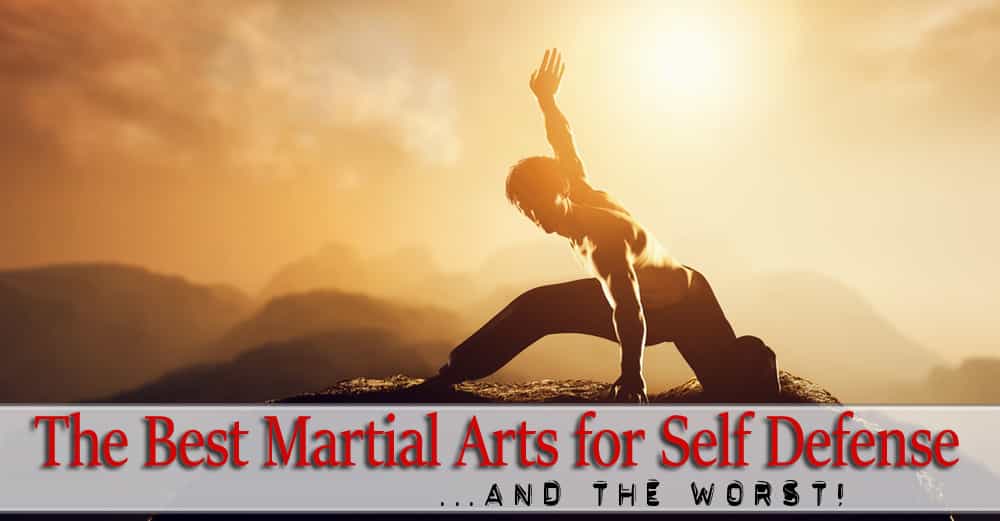
Self-defense techniques and martial arts disciplines both tap into your physical strength. Constant practice with both will allow you to forge a stronger mind-body link.
They both increase confidence and are usually catalysts of greater change happening within the psyche. There are specific techniques to learn. Almost all martial arts disciplines have a foundation that’s based on self-defense and “non-fighting”.
Self-defense can come in many forms and many weapons. The most effective weapon depends on several threat elements, which includes experience, how many needs to be defended, and the nature of the threat itself.
The gist applies to martial arts as well – one martial art discipline may be better suited for stronger threats while another discipline is excellent against armed attackers, for example.
A. Defining Martial Arts, and Establishing “Assumptions”
1) Definition of Martial Arts
“Various sports or skills, mainly of Japanese origin, that originated as forms of self-defense or attack, such as judo, karate, and kendo.” Martial arts are often mistakenly categorized as a traditional Asian or European discipline that follows closely in line and adheres to its’ respective culture.
As defined by multiple authoritative sources, we see that martial arts are much more encompassing by including sports or even “skills” into the mix. That’s a big field of possibilities for what defines a martial art. Let’s explore what they are.
2) Force Multipliers
In this article, we’ll leave out the use of weapons such as knives, guns, and other modern gadgets and rely on our own hands and feet. Force multipliers, i.e., guns, pepper spray, OC spray and tasers, in trained hands, are hands down the most effective tools for self-defense today.
In this post, we are studying martial arts as isolated tools, and inserting the assumption that we are forced to defend ourselves without essential force multipliers.
We’ll focus more on which martial arts disciplines will give you the best skill set in the self-defense aspect. We’ll also leave out tactical team defense, or the art of defending individuals in addition to yourself. Both of the former topics will be discussed in future posts.
It’s worth noting now, however, that in most realistic self-defense situations, all the possible tools and skill sets will likely be, and ideally used simultaneously in a synergistic way against active threats.
3) Self-defense with Multiple Attackers, and Defending Others
Human society will likely collapse in chaos and people will do anything in order to survive. Hence, self-defense and the ability to defend your loved ones will be a significant factor.
We must make the distinction that defending yourself from multiple attackers, as compared to defending yourself from a single attacker, is a different challenge altogether; as is defending yourself and multiple team members/loved ones/family where more coordination and tactical skills and planning are added to the mix.
In this post, we will remove the factor of defending multiple members of your party from single and multiple attackers for the sake of argument, (as they are to be left as subjects of future in-depth posts), to allow for a more thorough study of each martial art in single person defense encounters.
B. The Most and Least Effective Martial Arts for Self-defense
Here’s a list of the most and least effective disciplines when it comes to defending yourself from any type of harm. Keep in mind that each self-defense situation may be unique and require specific skillsets or techniques to become truly effective.
Which discipline has the widest and most useful range? Which martial art is a jack-of-all-trades? Which discipline shines in specific situations but not in others?
1) The Most Effective List (In No Particular Order)
- Brazilian Jiu Jitsu
It’s one of the best martial arts in the list because it gives the user a complete repertoire of leverage based techniques to disable a threat. Some might say it’s a descendant of the ancient martial arts Judo as it requires the threat to be on the ground.
BJJ first exploded onto the scene in the world of MMA. The Gracie family were the earliest practitioners of Brazilian Jiu-Jitsu; Royce Gracie used BBJ exclusively to defeat his opponents in the octagon ring. Today, BJJ is still a popular fighting option in the MMA circle.
Locks, chokes, and ground-pounding is Brazilian Jiu Jitsu’s theme. It’s good for street fighting and is a very capable discipline in its own right. Some of the techniques you’ll be learning include takedowns and other forms of submissions made up of cranks, locks, and chokes.
Brazilian Jiu-Jitsu is an excellent medium to train the body and increase physical strength and stamina, all of which are useful in emergency situations.
The most immediate weaknesses of this discipline include group fighting, dealing with armed attackers, and zero striking techniques. BJJ can dominate the threat once they’re on the ground but you’ll need to have the immense physical strength to do so.
Useful for 2 or more attackers? Rating 2/5. It is more suitable in 1-on-1 situations as the other attacker may take advantage of the fact that you’re on the ground with the first threat.
- Boxing
Boxing primarily focuses on punches as the sole source of offense. The feet are mainly used for side-stepping, dodging, and footwork. The great thing about boxing is that it’s relatively easy to learn and you’ll need just a few pieces of equipment to start.
Boxing is simple yet effective. It’s simple-minded in its approach that you can become adept in punching in no time. More than that, you’ll discover that there’s more to boxing than punches. Peel away and you’ll add to your repertoire of self-defense in other aspects, such as darting in and out from danger and moving quickly – striking when the time is right.
You’ll learn how to deliver different types of punches with precision (and in different ranges). You’ll learn how to block (if unarmed) and evade (if armed). To get the most out of using boxing as self-defense, you’ll need to condition your body to deliver powerful punches and gain experience sparring with opponents.
Your senses become sharper the more you practice boxing. Reaction time becomes faster and you’ll be able to make sound decisions under duress. This kind of street sense will be invaluable if you’re facing threats or experiencing an emergency situation.
Boxing has one of the toughest training regimens in this list, but you can expect great results once it’s completed. Sessions include press-ups, skipping, bag work, and sparring. Self-defense applications in boxing become obvious once you’re in self-defense mode. What’s more, you’ll have the stamina and the strength to take on a group of threats either one by one or simultaneously.
Useful for 2 or more attackers? Rating 4/5. You’ll be able to handle multiple attackers if you move smart and punch with precision.
- Mixed Martial Arts
MMA is a global phenomenon featuring flashy strikes, explosive takedowns, and a variety of chokes and arm locks. But beware of the physical toll on your body if you want to take up this discipline. Like boxing, mixed martial arts will tax your body as you do endless sparring with strikes and grapples thrown in.
The good thing about MMA is that your physical performance will increase across the board. Strength, stamina, speed, and reflexes become better compared to their previous state. Sometimes this improvement will be all you need to stop an attacker dead in his tracks. MMA will show its weakness when you’re out in the streets.
There’s no defense using weapons and it’s a poor choice for taking on multiple threats. Like the sport, it’s flashy if you somehow disarmed your threat or take them out with one punch.
Useful for 2 or more attackers? Rating 2/5. You’ll become faster, stronger, and able to move much faster but there aren’t any techniques for taking on multiple attackers.
- Krav Maga
The Krav Maga system has become somewhat synonymous with the word “self-defense”. In Hebrew, Krav Maga means “contact fighting” and is recognized as the official self-defense discipline of the Israeli Defense Forces.
Imi Lichtenfeld, the discipline’s creator referred to the system as the “Art of Staying Alive”. Plus, it’s totally defense-oriented. Krav Maga is a distillation of Muay Thai, Brazilian Jiu Jitsu, and a host of other martial arts.
The techniques outlined in Krav Maga appear complex but they are relatively simple to execute. You’ll need to practice on reflex and let instinct take over to master this discipline. Anyone can learn the techniques in Krav Maga regardless of height, weight, or gender.
There are 3 basic pillars to follow: Neutralize, Simultaneous Attack, and Defense and Attacking Vulnerabilities. Most of the techniques in Krav Maga are meant to move weapons away or disable it all together to lessen the risk of getting hurt.
Then, you’ll learn how to meld both attack and defense in one quick move to surprise and debilitate the attacker. Vulnerabilities in the human anatomy are targeted; the neck, groin, throat, and eyes become fair game.
Much like street fighting, there’s no etiquette or rules of engagement in a life or death situation. Survival is a priority and you use everything to get the edge.
The only downside to being taught Krav Maga is that it may not be the same one that’s taught by the true experts. There are hardcore versions and “lite” versions that are more boxercise than Krav Maga.
No self-defense list should be without Krav Maga – it’s that good! You’ll learn how to disarm a man with a knife or a gunman in just a second. There are striking techniques and grappling techniques that round out the things you can learn from the discipline. Once you learn Krav Maga you’ll stand a greater chance at survival than doing nothing.
Useful for 2 or more attackers? Rating 4/5. You can do it if you’re quick and precise in your movements. The plus side is that you’ll have the training and the reflexes to think ahead and counter every move.
- Karate
Karate, one of the oldest and the most popular martial arts, is a well-rounded discipline that incorporates plenty of punching, kicking, grappling, and stances. If your idol was Mr. Miyagi in Karate Kid, then it makes sense that you’d choose Karate as your discipline for self-defense.
Karate is solid in all aspects. Some of the best blocks you’ll learn are here. Same goes for kicks, punches, and throws, which could be useful in close-quarter situations. Keep in mind that not all of the karate moves you’ll be learning are for self-defense alone. So if you’re just picking out the ones that could get you out of a pinch, then the adage “simple moves are the best” can be applied here.
Learning karate is relatively easy and it doesn’t cost much to train. You’ll learn how to think calmly and not get overwhelmed in emergency situations. You’ll learn to react faster and save precious seconds in survival scenarios. Karate shines in self-defense scenarios when you use power kicks and straight-yet-effective strikes to down the attacker.
If not, there’s the more complicated elbow and knee strikes, spear hands, and others. When you learn karate, you’ll gain formidable weapons in the form of your arms and legs. To be truly effective, you’ll need to increase your physical strength and become as fit as possible.
Karate works well if you’re facing off against human threats and in instances where people are attacking you. The discipline shows you how to neutralize held weapons such as guns and knives at close range and how to deal with damage using precise strikes to various weak points in the body.
Useful for 2 or more attackers? Rating 4/5. You can strike quickly and down several threats without expending too much energy.
- Jeet Kune Do
Roughly translated as “Way of the Intercepting Fist”, Jeet Kune Do’s founder is none other than the legendary Bruce Lee. While it’s one of the most practiced martial arts in the world, there’s quite a bit of confusion as to what this discipline offers to the practitioner.
Jeet Kune Do was largely believed to be more of a philosophical journey than an actual martial arts discipline. Bruce Lee started out training in the art of Wing Chun under Ip Man.
He then traveled around the world and gained real combat experience while studying and coming in contact with other martial art systems. The culmination of Bruce Lee’s journey resulted in the discipline known as JKD.
JKD schools have instructors that are well-versed in many disciplines. The book that Bruce Lee wrote about Jeet Kune Do was astounding. There are technical improvements on borrowed moves and sound reasoning on original theories. The discipline also hosts plenty of strategies that fare well against one or more attackers.
It’s probably safe to say that no two Jeet Kune Do schools are alike, but they all share the same solid foundation as taught by its creator. You can be sure to learn many combat strategies, striking techniques, and a variety of unique moves you can use for self-defense. JKD is best for those who have plenty of time and wish to compile the best techniques for a one-of-a-kind style.
Because Jeet Kune Do is deep, there are many moves you can use for a variety of self-defense scenarios. The trick is to find the right one and train for it as hard as you can.
Useful for 2 or more attackers? Rating 4/5. There are specific moves, skills, and techniques you can use to defend against multiple threats.
- Traditional Japanese Jiu Jitsu
Jujutsu is a culmination of several different martial arts disciplines, i.e., Brazilian Jiu-Jitsu, Aikido, Judo, etc. In English, Jujutsu means “the Art of Softness” but the techniques and the strikes are quite the opposite of name.
This martial art started in Japan and was one of the fighting techniques taught to samurais. It may be hard to picture a samurai without a sword, but sometimes their weapons get lost on the battlefield. The Japanese thought about adding a martial art that could prove to be as deadly as a samurai with a blade, thus Jujutsu was born.
The whole system revolves around the concept of using your enemies’ force and throwing it right back at them with deadly force. A Jujutsu fighter has the ability to redirect the attacker’s momentum and energy where they wish, often making the attack harmless and giving the Jujutsu user an opportunity to counterattack.
You’ll need to really get close, though. Most of the self-defense techniques taught in Jujutsu are joint locks and throws.
Most use them both in rapid succession to bring the threat down to the ground in a second. Jujutsu shines where there’s plenty of space to move about. Plus, you won’t have to worry about your attacker being armed or unarmed.
In tight confines, the throws and locking become less effective. Still, practitioners will have the ability to bring down attackers even if they’re bigger or heavier.
Useful for 2 or more attackers? Rating 3/5. You can’t perform a throw if both attack at the same time.
- Judo
Judo is a close-contact discipline that makes its appearance in the Olympic sports. At its core, Judo has a variety of self-defense moves: plenty of arm locks, chokes, pins and throws and zero striking, kicking, and punching. At first glance, it may seem like Judo is an inherently poor self-defense system but the discipline tells you otherwise.
Judo is excellent for self-defense as your sole objective is to throw your attacker to the ground. It may not sound much but a forceful throw to the ground can cause serious injuries and neutralize the threat.
Plus, most of the time Judo practitioners try to knock their opponent’s feet from under them while the latter do their best to stay upright. It can prove to be super effective if your attacker has no idea on how you’ll defend yourself.
Judo is deadly once you’re able to get in close and grab your attacker. While it may not be useful in situations where there’s a distance between you and the threat, it works every single time when you find yourself in close quarters.
Useful for 2 or more attackers? Rating 3/5. You’ll be hard-pressed to throw 2 or more people to the ground at the same time.
- Wing Chun
Wing Chun might be the most popular martial art today because of the movie trilogy Ip Man, but in terms of self-defense it stands up well against the others in the list.
Like Karate, Wing Chun relies on expending the least amount of energy while delivering direct, laser-like strikes that feel like the opponent is getting hit with a pole’s end.
Solid straight punches and a few effective kicks are all you need from Wing Chun to be good at self-defense. So if you don’t have much time to practice a slew of martial arts techniques, then Wing Chun could be perfect for you.
The precision striking works well in many self-defense scenarios. If you need to deal a significant amount of damage to one area, i.e., the face, the groin, and other sensitive areas, then practicing Wing Chun delivers to this end.
There are not a lot of moves to disarm attackers, but the discipline relies on bringing down the threat in a short amount of time.
Useful for 2 or more attackers? Rating 3/5. You can strike with precision but you’ll need to get a favorable position first.
2) The Least Effective List
- Aikido
The core teaching of Aikido is that physical confrontations are to be avoided at all costs. While this may be fine for you, the attacker may not exactly have peaceful negotiations in mind. This makes Aikido one of the least effective disciplines for self-defense.
Aikido’s whole self-defense arsenal is composed of wrist locks and falling without harm. Punching and kicking are not allowed. Instead of using the opponent’s energy against him, you channel the energy within you. Sure, you can enroll in Aikido class for other benefits, but you won’t be able to use them in self-defense and in emergency situations.
All is not lost with Aikido. Physical exercises increase your balance, coordination, and reflexes. You also sharpen your innate sense of timing, flexibility, and posture.
- Tai Chi
Tai Chi is a slow-moving, low impact exercise routine that makes the practitioner go through a series of “poses” that mimic actions. One example is the move “crane spreading his wings” and a martial arts technique that “boxes both ears”. Moving is slow and breathing is deliberately done in the same manner. While doing Tai Chi, you focus your attention on your inner self and bodily sensations.
Tai Chi sounds exactly as it is – slow and offers no defense at all. The practitioner goes through the paces like a snail and executes the katas using dynamic resistance.
While there are some who would say that the practitioner could accelerate the motions for self-defense purposes, lack of sparring or actual experience could prove to be a rude awakening. You’ll quickly realize that Tai Chi just isn’t meant as a tool for self-defense.
Advocates might say that practitioners could use their opponent’s energy and topple them that way, but there’s no technique or move set that could be used to evade or counter their attacker’s movements. Moreover, “fights” are more like choreographed dancing than real fighting.
Tai Chi shines when used in non-violence and for bettering the self. Practitioners become more relaxed, relieved and free of stress after each session. Tai Chi is, in fact, often used to treat many health problems and is seen more like a miracle health exercise than a martial arts discipline.
- Capoeira
Capoeira is a martial arts discipline originating from Brazil and Africa. It was created by African slaves while they were in Brazil during the 1500s. At the surface, Capoeira looks like an intricate dance but it actually benefits the body, especially the hamstrings, the buttocks, and the quadriceps. A typical Capoeira dance sequence involves cartwheeling, kicking, and spinning (which looks impressive), but sadly it’s the same as with Taekwondo.
Dance fighting just isn’t applicable in life or death situations or when you’re faced by an attacker with the intent to harm or kill. The weaknesses of martial art were quickly revealed in the beaches of Brazil.
Ultimately, it was labeled as being impractical for self-defense. Brazil believed that Capoeira was their dominant martial art until Jiu Jitsu came along. Needless to say, Capoeira ended quickly while MMA and other disciplines dominated the battlefield.
Capoeira is great for those who want to combine martial arts with the exercise benefits of dancing. Your muscles get worked out and your body becomes more flexible. What’s more, you gain a sense of body rhythm and harmony.
- Taekwondo
Taekwondo is a martial arts discipline that may be seen as flashy, and sometimes this translates to not being useful when it comes to real life situations. Martial arts experts often say that Taekwondo is impractical as a form of self-defense.
There’s one saving grace to Taekwondo as a self-defense tool. You’ll need your legs to be much faster than your arms and opt for straightforward moves instead of high-flying ones. If you can execute one kick and down the attacker, then great.
Otherwise, reserve the high-spinning kicks for when you need to get the judges’ approval. The hands are also used for this martial art but at a far less frequency than the legs.
Taekwondo is excellent for self-improvement purposes. The discipline stretches out your muscles (especially the leg area) and lends suppleness and flexibility. You can get fit and lose weight with Taekwondo.
Just don’t expect close-combat practices such as chokes, grabs, or throws and you’ll be fine. The fact that this martial arts discipline concentrates on leg attacks doesn’t mean that it is a go-to system that you can rely on for defense.
C. Final Words on Martial Arts
It’s safe to say that there is no single martial art that will protect you from all of the unique self-defense scenarios that you may encounter, due to the fact that all self-defense situations are not created equally (including the victims).
It could be argued (by experts everywhere) that for single attack self-defense encounters against untrained opponents, Brazilian Jiu Jitsu and MMA are the favorites. The reason is that both disciplines make the best use of the laws of physics by utilizing leverage and efficiency of movement techniques.
Everyone has different physical strengths that allow for different types of martial art skills. It’s the job of the defender to know yourself – your physical limitations and capabilities, and gain some insight into how you might react in a self-defense emergency. Using that knowledge, you can better equip yourself with the necessary skills to survive a defense encounter.

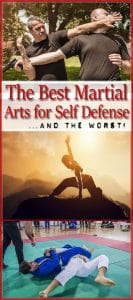


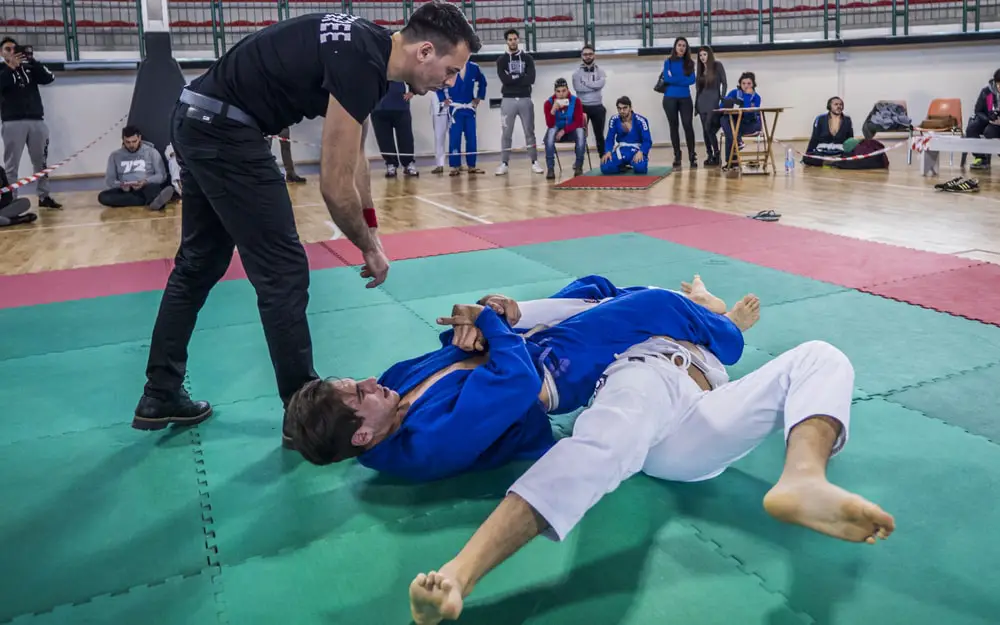



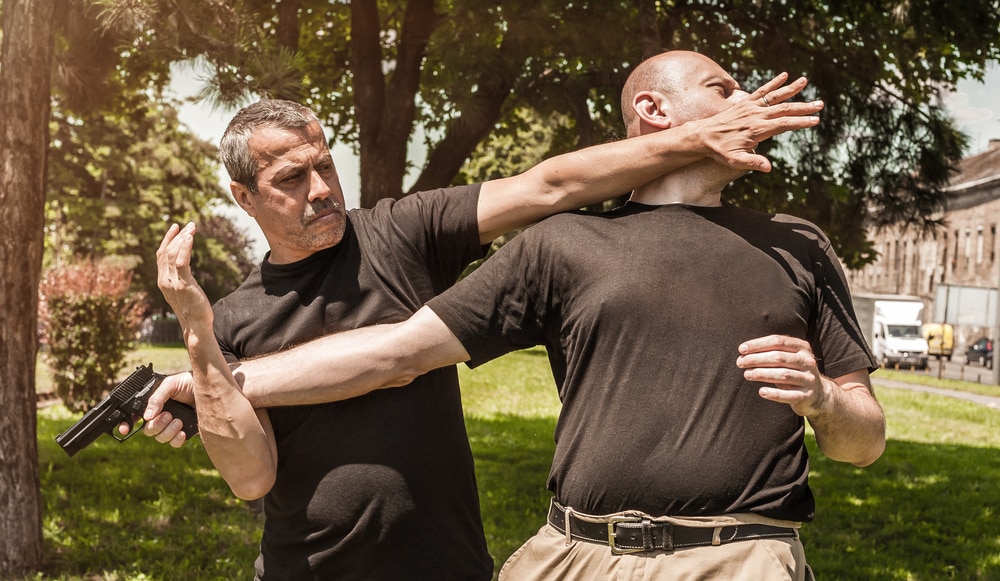
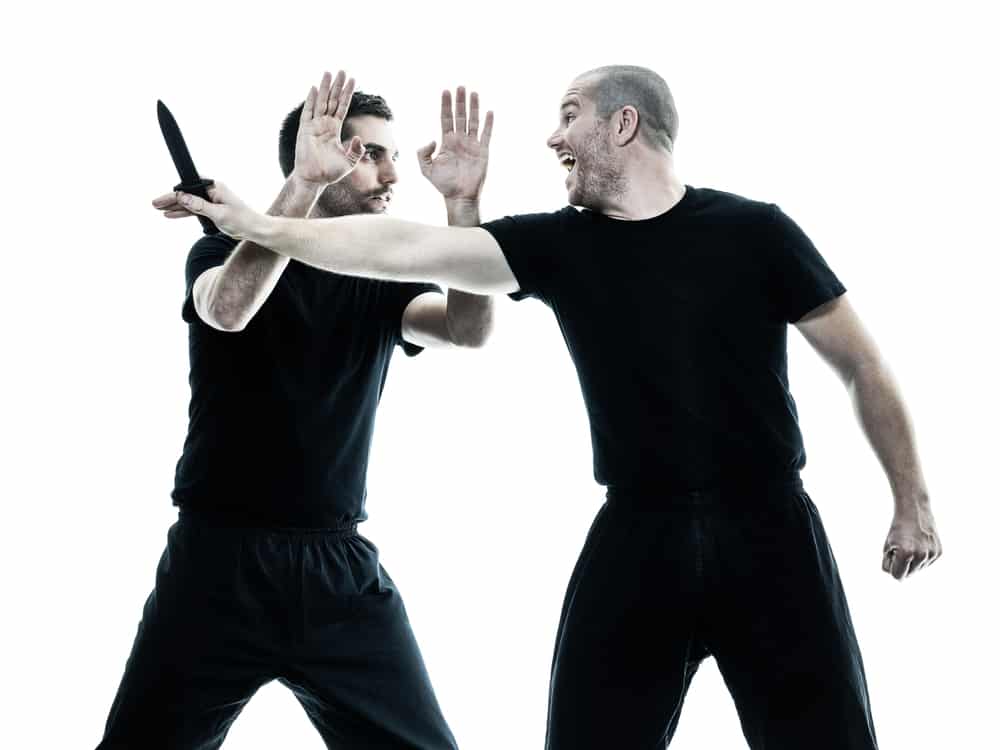
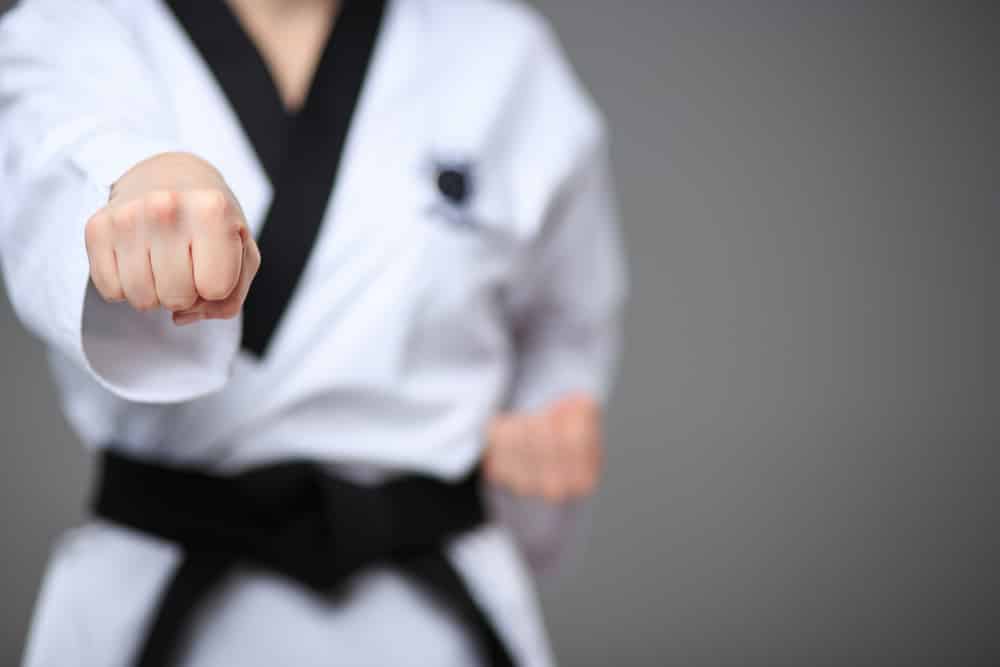
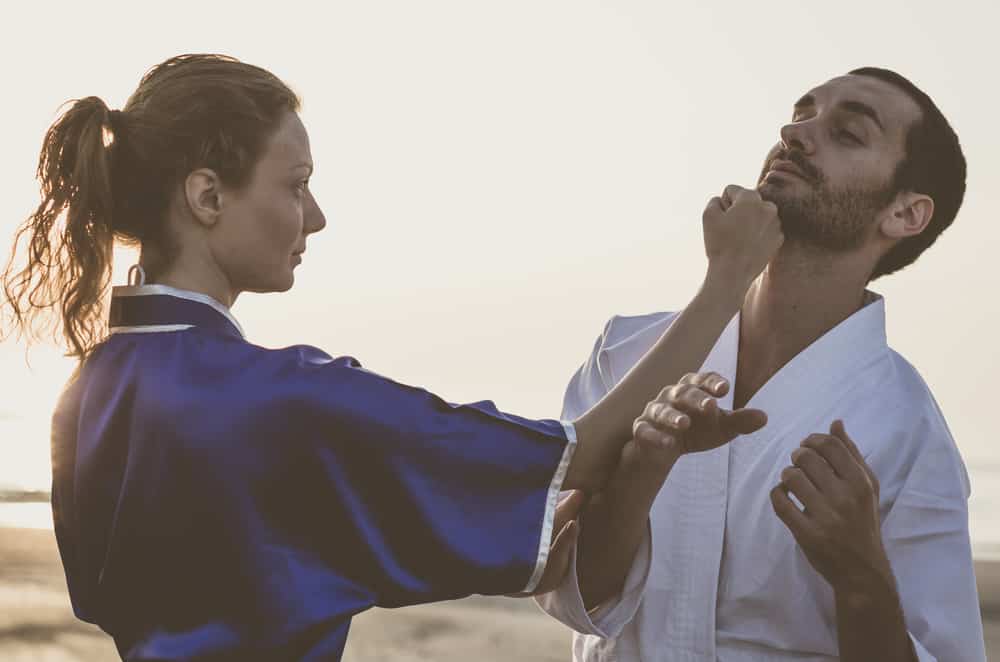
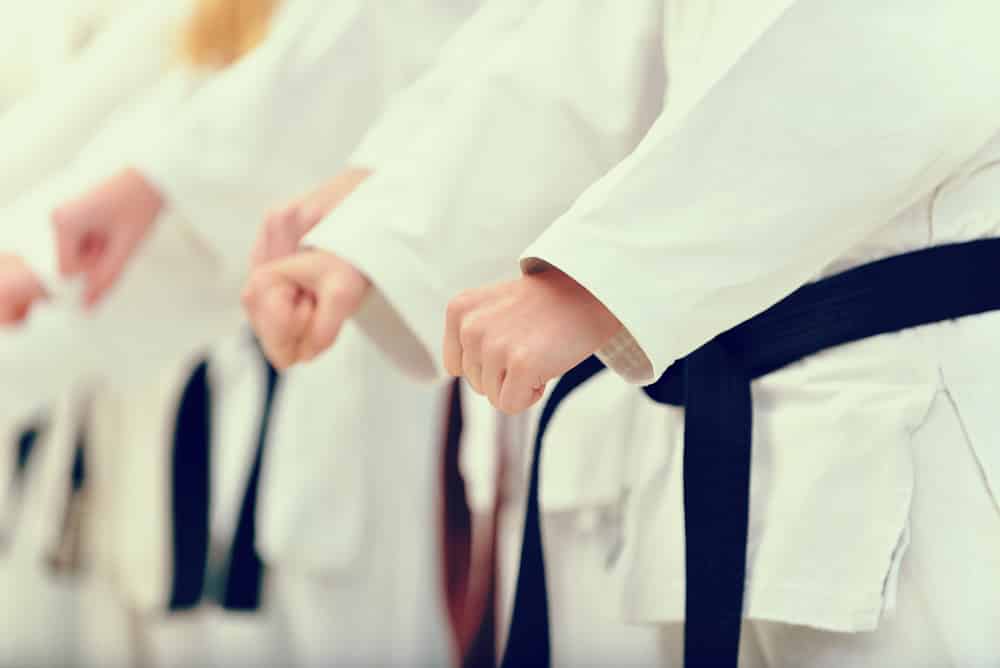
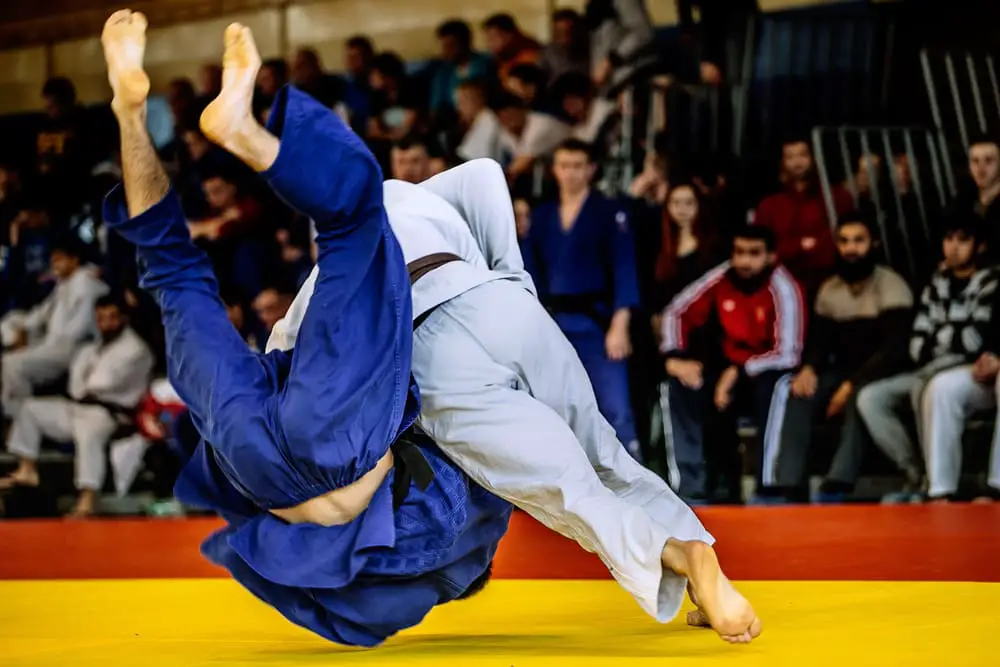
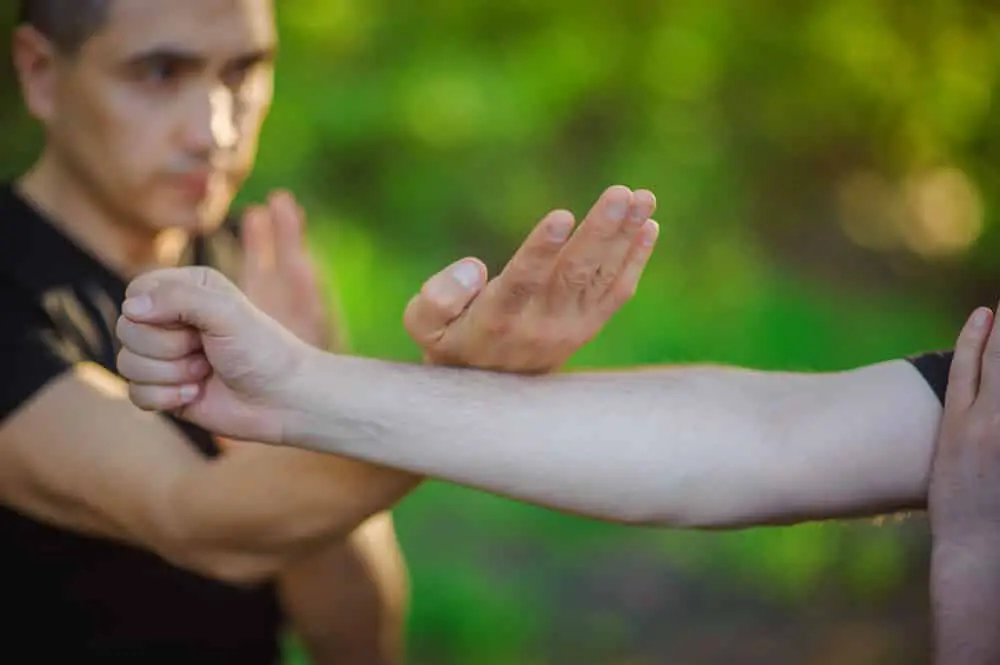



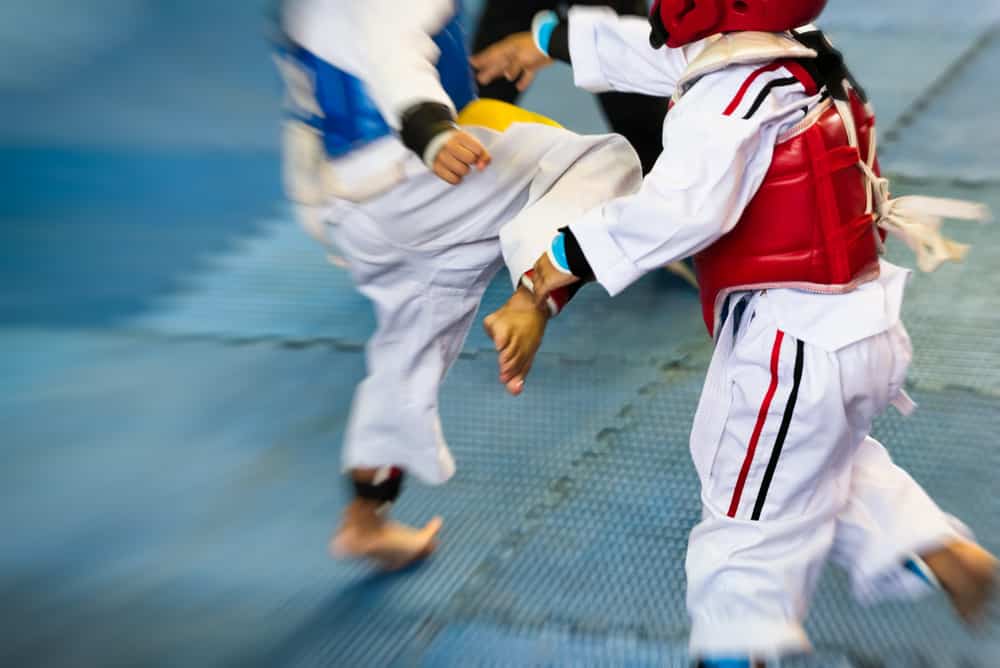
Great article, I just wanna know more about Krav maga. I’m not totally aware of this martial arts self-defense.